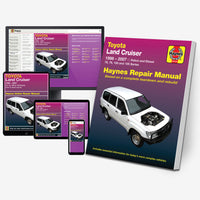What is an ignition system in the grand scheme of your car’s network? It’s a question we often hear from readers. Your car’s ignition system produces the sparks used to ignite the air/fuel mixture in a petrol engine (diesel engines don’t have an ignition system).
The ignition coil transforms the low voltage electricity from the battery into high-voltage electricity, which is sent along the HT (High Tension) leads to the spark plugs. And the spark plugs are screwed into the cylinder head, and produce sparks inside the combustion chambers. With this overview in mind, let’s delve a little deeper into the subject…

Ignition timing
The exact instant at which the air/fuel mixture inside each cylinder is ignited is critical, and has an important effect on how the engine performs. The instant at which the mixture ignites in each cylinder depends on when the spark plug produces a spark to ignite it. The timing of the spark is known as ignition timing, and this can be controlled very accurately by the engine management system.
On most modern systems the ignition timing is varied constantly, and the timing for each of the engine’s cylinders is controlled individually, which helps to maximise the efficiency of the engine.
Distributor-based ignition systems
Until the introduction of electronic engine management systems, a distributor was the main component of the ignition system, controlling the coil and the ignition timing and distributing the high-tension (HT) voltage from the coil to the spark plugs. Nowadays, if a distributor is used at all its sole job is to distribute the HT voltage to the spark plugs.
A ‘rotor arm’ inside the distributor is driven by the engine, and rotates inside the distributor cap. The coil is connected to the rotor arm, which spins past a series of contacts – one for each of the engine’s cylinders.
As the rotor arm passes each contact in the cap, a pulse from the ignition coil jumps the small gap between the rotor arm and the contact (they don’t actually touch) and then passes down the HT lead to the appropriate spark plug.
Distributors are now rare, and most modern engines have a distributorless ignition system.
Direct ignition systems (or ‘distributorless’ ignition systems)
A direct ignition system (sometimes known as DIS) does not have a distributor. The HT leads run directly from the coil to the spark plugs – the coil has a connection for each of the engine’s cylinders – and the ignition timing is controlled by the engine management system.
Some engines actually have a separate coil for each cylinder, and on these systems the coils are often fitted directly above the spark plugs, which means that long HT leads aren’t needed.
Spark plugs
Spark plugs are fitted to petrol engines, and their job is to ignite the air/fuel mixture in the cylinders at the correct instant.
When the ignition system sends a voltage down the HT lead to the spark plug, the high voltage causes a spark to jump between the spark plug centre electrode and the earth electrode(s). The spark ignites the explosive air/fuel mixture, which expands, pushing the piston down the cylinder.
The ‘spark plug gap’ (the gap between the earth electrode(s) and the centre electrode) can be adjusted to suit a particular engine. The size of the gap is very important, because it controls the way the air/fuel mixture burns. Some spark plugs have more than one earth electrode

























